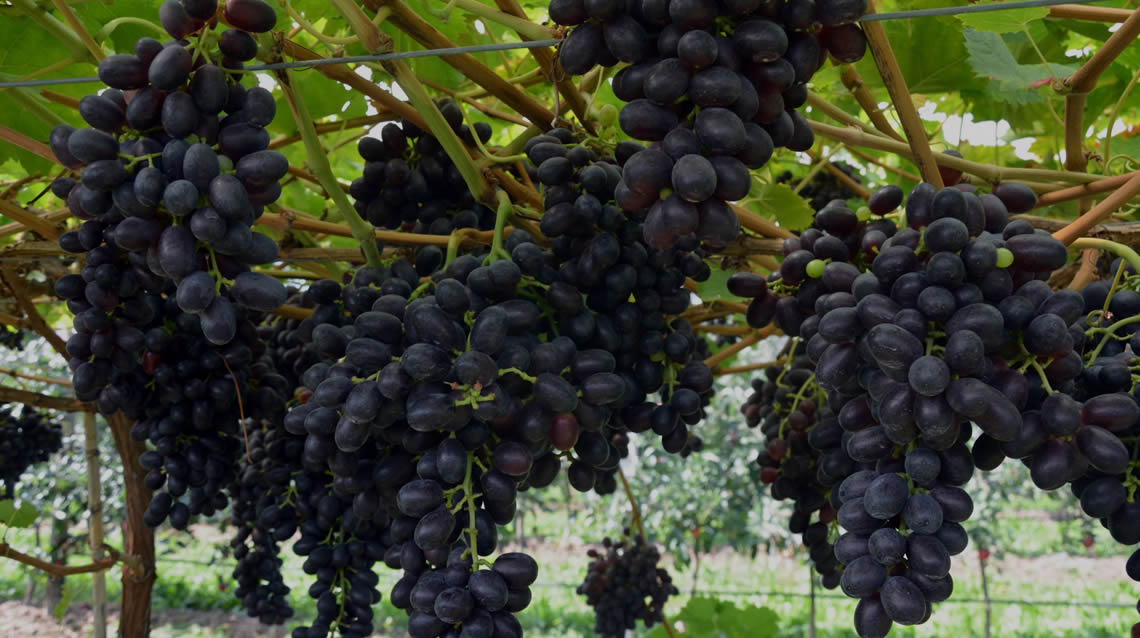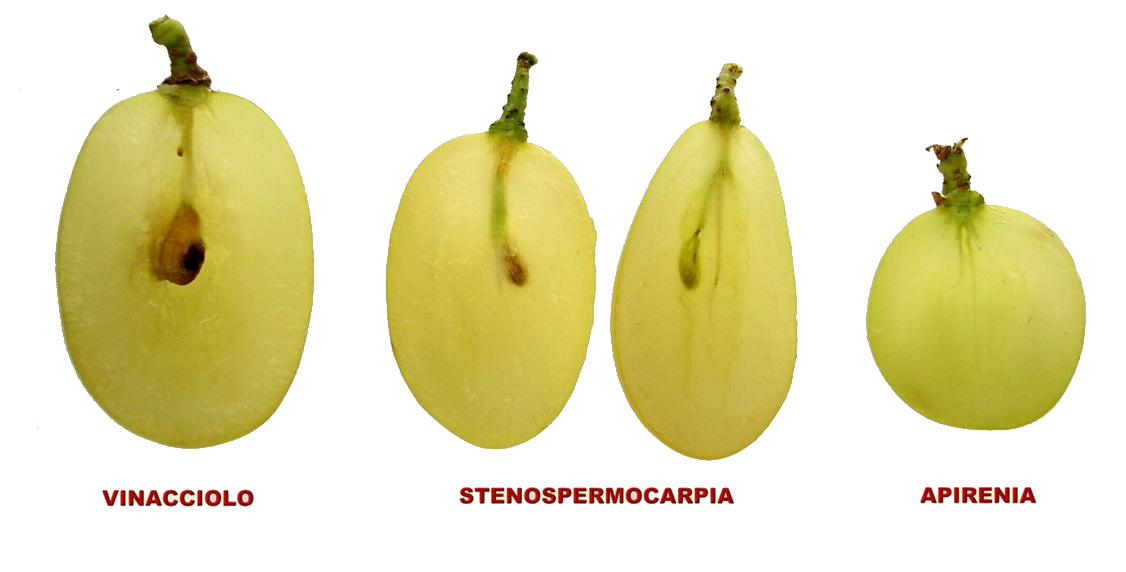- Ita
- Eng


SEEDLESS GRAPES : A GIFT OF NATURE
Apirene

The phenomenon of Apirenia grapes is the natural production of seedless grapes. The existence of Apirene (meaning seedless in Greek) grapes is lost in the mists of history. This is shown by a wide production of magno-Greek ceramics and coins bearing the effigy of clusters that, because of their shape, lead back to seedless grapes (Corinth and Sultanine type). Traditionally, seedless grapes was always destined to the production of dried raisins also known as sultanas. Recently, however, seedless grapes has achieved a significant commercial importance for fresh consumption along with the traditional grapes with seeds. In some countries, the demand for seedless grapes has exceeded the one for grapes with seeds. Therefore, it can be said that this pleasant natural property of table grapes is dramatically changing the consumer tastes. The Apirenia is appreciated for different reasons: the ease with which children can eat this variety of grapes, the absence of any embarrassment due to the need to expel the seeds from the mouth after eating each single acinus, the simplicity in preparing desserts and fruit marmelades, comfort in preparing fruit for fourth range. For reasons substantially similar, the Apirenia phenomenon is also welcome in other fruits such as clementines.
STENOSPERMOCARPY
Apirenia (or the lack of seeds) is the natural phenomenon that leads to the formation of seedless grapes and that are, consequently, of reduced dimensions compared to acinus of traditional grapes variety with seeds; these grapes are known commercially as Apirene Grapes, Grapes without seeds, seedless grapes, uvas sin semillas. From the botanical point of view, there are two forms of seedlessness: Stenospermocarpy (fruit with rudimentary seeds) defined as Sultana type; Parthenocarpy (completely seedless fruit) defined also as Corinth type. All currently marketed seedless grapes for fresh consumption, belong to the first group (stenospermocarpicous grapes); that means that their berries present in section rudiments of aborted seeds in variable forms.

